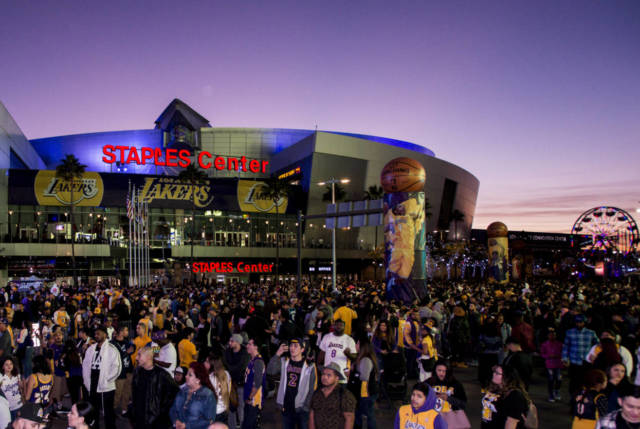When it comes to stadiums, marketers have historically been limited—think Jumbotron messaging with LED ribbons or static images.
But with floods of event-friendly technological innovations and 60-plus new major sports stadiums set to open between now and 2020 around the world, more brands have opportunities to build marketing strategies to reach fans through far more innovative ways.
First, there are brand activations that directly benefit consumers—including ways to use tech to sponsor seamless logistics to the purchasing process of getting to the venue, finding the shortest line, best food options, merchandise delivery to seats and live in-game updates around scores and stats.
Josh Veilleux, vice president of global partnerships for AEG, which owns the Staples Center in Los Angeles and the 02 Arena in England, said that marketers have to look at what’s going to enhance the consumer’s experience.
“We want sponsorships and activations to improve the stadium experience for fans, but we don’t want it to overwhelm them,” Veilleux said. “If they can provide value to the fans in a genuine way that either saves them time, increases their knowledge of the sport or event while viewing or takes them into the action, they’ll be able to reach the fans in a meaningful way.”
While in-stadium marketing is traditionally the realm of major beverage, food, entertainment and sports brands, there are also opportunities for non-endemic companies.

Last month, Impact, an Illinois-based company in the business-process optimization sector, opened a branded restaurant, in the main concourse of Staples Center. As a sponsor, Impact is looking to use the comprehensive marketing partnership and multi-year agreement to build brand recognition with key decision makers in Southern California who frequent the iconic venue.
“The marketing value lies in the name recognition that Impact will receive in the Los Angeles market,” said Don Duvall, Impact’s vice president of business development. “It is better for our sales rep to walk into an account and have the client know who you are, and having our name on the restaurant will do that.”
For mass-consumption brands like Coca-Cola, which can easily represent at global events like the 2018 Winter Olympics, the fan experience in the venue is a very small part of their marketing strategy.
According to Ricardo Fort, VP of global sports partnerships for Coca-Cola, the brand benefits a lot more from sponsorships when it takes the message of what happens inside its venues and broadcasts it outward to as many people as possible. For example, the brand positions Coke Music TV to broadcast livestreams of music artists curated by the brand.
“We have marketing initiatives of how we serve consumers in stadiums, but in general, the vast majority of our efforts goes to whoever else is not there,” said Fort. “As a fan and as a marketer, it’s very interesting to see the capabilities. But things like VR and AR, things that can be experienced outside of the venue, are more meaningful for us than how we pay or get served inside of a venue.”
Although having a fan’s favorite player or celebrity usher them to their seat through a hologram may be cool, Cara Vanderhook, vice president of marketing and communications for Staples Center and Microsoft Theater, prefers more old-school marketing strategies. She said activations that resonate most with consumers are the ones where fans walk away with something tangible. In return, the advertiser gets more eyes on their brand as guests travel throughout the event with a physical item.

Vanderhook said these opportunities can overwhelm some. “It requires advertisers taking the time to get creative and determine the best way to push that information to consumers,” she said. “With the proper research and technology, it can be effective.”
Robert Vartan, who oversees corporate partnership sales and development for the MLS franchise Los Angeles Galaxy, said the evolving stadium experience for fans varies by property, but holistically should provide marketers with more customized and unique touchpoints to communicate their marque, mission, tagline and products.
“Any opportunity to align with a positive, lasting emotion is an invaluable asset to any sports and entertainment marketer,” said Vartan. “The future is not telling the fan how the brand will serve them—but actually showing them.”
For marketers, it’s ultimately important to know when to be reactive to an audience or proactively push beyond fans’ expectations.
“Auditing every aspect of your game-day and event-day experience is the first key,” said Vartan. “Becoming your own secret shopper and immersing in the everyday fan’s perspective will provide great results and insight.”

